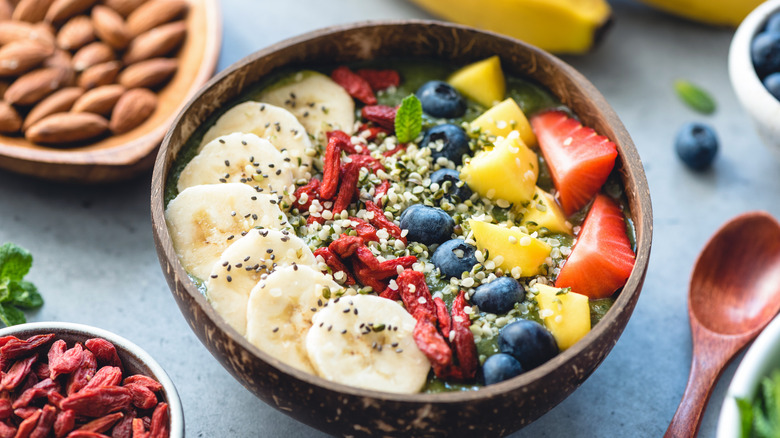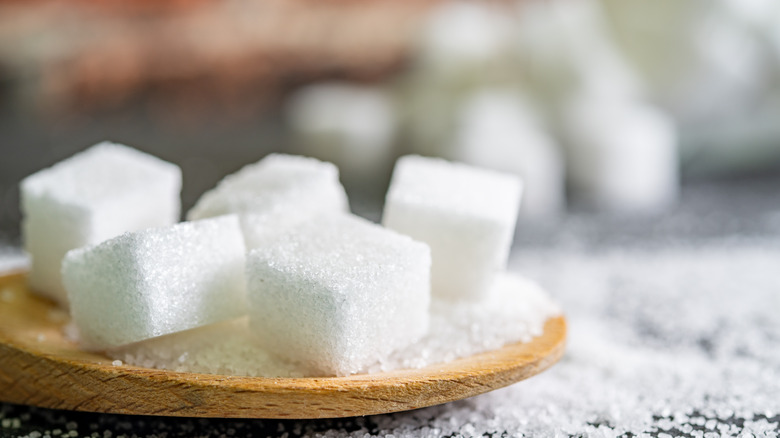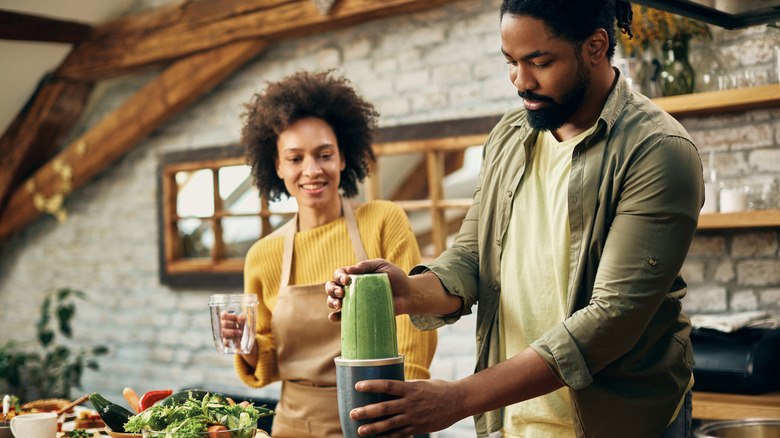Are Smoothie Bowls Actually Good For You?
Smoothie bowls are a popular breakfast choice these days. But what actually is a smoothie bowl and how does it differ from a smoothie? Easy Home Meals points out a few key differences. Both types of concoctions consist of pureed fruit and vegetables, yogurt, and other ingredients, but smoothies are blended beverages while smoothie bowls are thicker in texture and are meant to include yummy toppings like chopped fruit, granola, nuts, and seeds to be eaten with a spoon.
You may be thinking smoothie bowls sound delicious and nutritious, but are they worth the hype? And how healthy are they? It turns out that smoothie bowls are laden with sugar, calories, and carbohydrates, and provide very little protein and fat. The sugar and calorie count only skyrocket with the addition of sweet toppings. The result is often an unbalanced meal that leaves you hungry, despite all the calories you've consumed. On top of that, indulging in too many smoothie bowls might not be so good for you.
Excess sugar and other troubling nutrition facts
A lot of smoothie bowls you'll find are loaded with calories and excess sugar. To give you an idea, the Açaí Primo Bowl at Jamba Juice totals nearly 500 calories per bowl and contains almost 70 grams (yes, 70!) of sugar, while the Hella Good Greens Bowl from Juice Generation comes in at 490 calories and 46 grams of sugar (per HuffPost).
Now let's consider the toppings. A mere 1/4 cup of granola contains 140 calories and 4 grams of sugar (per Verywell Fit). If you like chopped fruit in your bowl, be aware that a banana alone adds another 110 calories and 15 grams of sugar (via Harvard School of Public Health). All these calories set you up for weight gain since they account for such a large portion of most people's daily caloric limit.
The high sugar count in many smoothie bowls is troubling. The American Heart Association points out that men should shoot for no more than 36 grams of sugar per day while women have a 25-gram limit. Going over this amount can lead to health complications, including type 2 diabetes, according to WebMD. Additionally, one 2014 study by JAMA Internal Medicine showed that added sugar — such as that found in granola and other processed smoothie bowl toppings — can put you at risk for developing cardiovascular disease.
How to make your smoothie bowls healthier
If you insist on starting your day with a smoothie bowl, there are things you can do to make them better for you. The key is to avoid any added sugar. "I recommend healthful, sugar-free toppings like unsweetened shredded coconut, cacao nibs, hemp seeds, and chia seeds, as opposed to sugary granolas, honey, or dried fruit with added sugar," registered dietician Andy Bellatti told HuffPost. Additionally, choose unsweetened plant-based milk over fruit juices for your smoothie's base to reduce overall sugar.
The best bowls contain protein and healthy fats to keep you full and humming through your morning. Adding a scoop of protein powder is easy enough. You can get your healthy fats by sprinkling chia seeds and hemp seeds in your bowl – just make sure not to go overboard as these ingredients are also high in calories (per HuffPost).
Beachbody On Demand suggests other ways to ensure you get the most nutrition out of your smoothie bowl without overdoing calories and sugar. For starters, don't peel the skin of fruits and vegetables, as it's a great source of nutrients and fiber. Also, eat your smoothie bowl slowly, aiming for at least 20 to 30 minutes to finish it, to ensure your brain has time to receive the message that your stomach is full. This will prevent you from overeating or feeling the urge to eat again soon.



